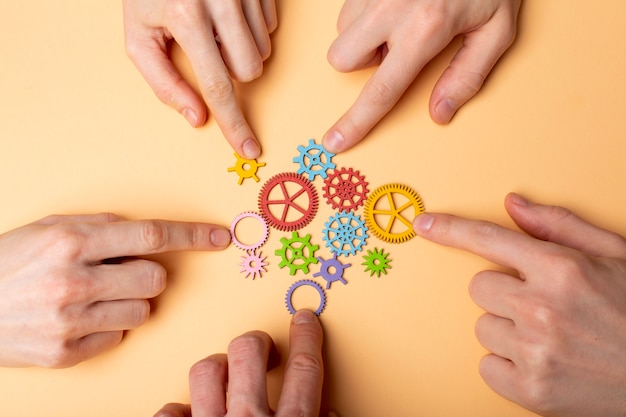Understanding and Troubleshooting 3D Printing Issues
Three-dimensional (3D) printing, also known as additive manufacturing, offers remarkable capabilities for prototyping, manufacturing, and creative endeavors. However, the process is susceptible to various errors, often stemming from a complex interplay of factors including material properties, machine settings, design flaws, and environmental conditions. A thorough understanding of these potential pitfalls is crucial for achieving successful prints and maximizing the technology’s potential. This comprehensive guide explores the diverse range of errors encountered in 3D printing, detailing their root causes and offering practical strategies for mitigation and resolution.
A. Filament Issues

The filament, the raw material in Fused Deposition Modeling (FDM) 3D printing, is a significant source of potential problems. Issues can arise from both the filament’s inherent properties and its handling.
- Filament Diameter Inconsistency: Variations in filament diameter lead to inconsistent extrusion, resulting in layer adhesion problems, dimensional inaccuracies, and even print failures. Consistent filament diameter is essential for reliable printing. This requires using high-quality filament from reputable suppliers and employing a filament diameter measuring tool to ensure consistency.
- Moisture Absorption: Many filaments, particularly those based on hygroscopic materials like PLA, absorb moisture from the atmosphere. This absorbed moisture can lead to bubbling, cracking, warping, and ultimately, failed prints. Proper storage of filaments in airtight containers with desiccant packets is crucial. Drying the filament before use, using a dedicated filament dryer, can also prevent these issues.
- Filament Degradation: Prolonged exposure to heat, sunlight, or humidity can degrade the filament, compromising its mechanical properties and printability. Filament should be stored in cool, dry conditions, away from direct sunlight. Check for signs of discoloration, brittleness, or other signs of degradation before use.
- Clogging: Impurities or degradation in the filament can cause clogging of the nozzle, leading to interrupted extrusion and print failures. Regular nozzle cleaning and maintenance are essential. Using a high-quality nozzle and ensuring that the filament is free of debris are important preventative measures.
- Material Compatibility: Using incorrect filament for the printer or a mismatched combination of materials can lead to poor adhesion, warping, and other print failures. Always check your printer’s specifications and material compatibility before starting a print. Ensure that you have the correct nozzle type and temperature settings for the chosen material.
B. Resin Issues (SLA/DLP Printing)

Stereolithography (SLA) and Digital Light Processing (DLP) 3D printing utilize liquid resins as their printing medium. Resin-related issues can significantly impact print quality and success.
- Resin Viscosity: Changes in resin viscosity due to temperature fluctuations, age, or improper storage can affect the curing process, leading to insufficient layer adhesion, warping, or incomplete curing. Store resins in a cool, dark place, away from direct sunlight. Using a resin viscosity meter is beneficial for ensuring optimal conditions.
- Resin Contamination: Dust, debris, or other contaminants in the resin can lead to poor surface finish, uneven curing, and print failures. Always filter the resin before use, and ensure that the resin tank is clean and free from contaminants.
- Resin Degradation: Exposure to light, oxygen, and heat can degrade the resin, changing its properties and rendering it unsuitable for printing. Proper storage in opaque containers is essential to maintain resin quality.
- Incorrect Resin Type: Using the wrong type of resin for the specific 3D printer can lead to various issues, including incomplete curing, poor layer adhesion, and damage to the printer. Always use resins that are explicitly compatible with the 3D printer model. Check the manufacturer’s specifications to ensure compatibility.
II. Machine-Related Errors

A. Mechanical Issues
Mechanical components play a vital role in the precision and accuracy of 3D printing. Malfunctions in these components can lead to a variety of errors.
- Bed Leveling: Incorrect bed leveling leads to inconsistent layer adhesion, warping, and print failures. Proper bed leveling is crucial. The process involves adjusting the distance between the print bed and the nozzle to ensure optimal contact throughout the printing process. Many printers have automated bed leveling features, while others require manual adjustment.
- Belt Tension: Loose or tight belts can cause inconsistent movement of the print head, leading to dimensional inaccuracies and layer inconsistencies. Appropriate belt tension is critical. Adjusting the tension as needed will improve the movement of the printing components.
- Extruder Issues: Problems with the extruder, such as improper gear meshing, worn parts, or clogged nozzle, lead to inconsistent extrusion and print failures. Regular maintenance and inspection of the extruder are recommended. This involves checking for wear and tear on the gears and ensuring that the extruder is properly calibrated.
- Z-Axis Issues: Problems with the Z-axis, such as binding or insufficient lubrication, lead to layer shifting and dimensional inaccuracies. Regular lubrication and maintenance of the Z-axis are crucial. This can involve lubricating moving parts with an appropriate lubricant and checking for any binding or obstructions.
B. Software and Calibration Errors
Software settings and printer calibration are crucial for optimal printing. Incorrect configurations can lead to various problems.
- Incorrect Slicer Settings: Improper slicer settings, such as incorrect layer height, infill density, or print speed, can affect the final print quality and structural integrity. Careful selection of slicer settings is crucial. Experimentation and careful consideration of the material and desired print quality will be needed.
- Firmware Issues: Outdated or corrupted firmware can lead to various malfunctions, including inconsistent extrusion, motor errors, and communication problems. Keeping the printer firmware up to date is crucial. Update regularly to benefit from bug fixes and performance improvements.
- Calibration Errors: Incorrect calibration of the printer, such as extruder calibration or stepper motor calibration, results in dimensional inaccuracies, layer inconsistencies, and print failures. Regular calibration is necessary to maintain print accuracy. Follow the manufacturer’s guidelines for calibrating the printer.
- Software Glitches: Software bugs or conflicts can lead to various printing errors, such as unexpected pauses, layer shifts, or complete print failures. Using stable and updated software is recommended.
III. Design-Related Errors
A. Model Design Flaws
Design flaws in the 3D model itself can lead to print failures or unsatisfactory results.
Read Also: Fixing 3D Print Errors: A Complete Guide – Printing Test Pages
- Unsupported Overhangs: Overhanging sections of the model may not have sufficient support, leading to sagging, warping, and failure. Appropriate support structures are crucial. The slicer software should generate and allow for the inclusion of support structures to prevent overhang issues.
- Non-Manifold Geometry: Non-manifold geometry, where surfaces intersect improperly, can lead to slicing errors and failed prints. Models should be checked for manifold geometry prior to printing. Software can be used to detect and correct such errors.
- Thin Walls: Excessively thin walls can be brittle and prone to cracking or collapsing. Wall thickness should be adjusted for the specific material and application. Increasing wall thickness can improve structural integrity.
- Insufficient Infill: Inadequate infill density can compromise the structural integrity and strength of the print. Appropriate infill density should be chosen depending on the intended application. Solid infill might be needed for structural parts, while lower infill is suitable for lightweight models.
- Complex Geometry: Highly complex models can be challenging to print, leading to increased printing time, support issues, and potential failures. Simplifying the model’s geometry where possible is recommended. Smaller, more manageable prints are usually more reliable.
IV. Environmental Factors
Environmental conditions can significantly impact 3D printing success.
- Temperature Fluctuations: Extreme temperature changes can affect the filament’s properties and lead to warping, adhesion problems, and dimensional inaccuracies. Maintaining a stable ambient temperature is recommended.
- Drafts: Air drafts can cool the filament too quickly, leading to warping and poor layer adhesion. Protecting the print from air drafts is important. Enclosing the printer or using a draft shield can help maintain a stable environment.
- Humidity: High humidity can affect the absorption of moisture by hygroscopic filaments, leading to various printing issues. Maintaining low humidity is recommended, especially for hygroscopic filaments. Using a dehumidifier or air conditioner can reduce humidity.
- Dust: Dust and debris can contaminate the filament or resin, affecting the printing process. Maintaining a clean printing environment is recommended. Regular cleaning of the printer and the surrounding area is advisable.
V. Troubleshooting Strategies
Effective troubleshooting requires a systematic approach.
- Analyze the Error: Carefully examine the failed print to identify the nature and location of the problem.
- Review Print Settings: Check the slicer settings, ensuring they are appropriate for the chosen material and model.
- Inspect the Machine: Examine the printer’s mechanical components, checking for any loose parts, obstructions, or damage.
- Check the Filament/Resin: Inspect the filament or resin for signs of degradation, moisture absorption, or contamination.
- Consult Documentation: Refer to the printer’s and filament/resin manufacturer’s documentation for troubleshooting tips.
- Online Resources: Utilize online forums and communities dedicated to 3D printing for assistance and guidance.
VI. Importance of Understanding 3D Printing Errors
Understanding the causes of 3D printing errors is essential for achieving consistent, high-quality prints. This knowledge enables users to optimize their printing processes, troubleshoot issues effectively, and ultimately unlock the full potential of this transformative technology. By proactively addressing potential problems, manufacturers and hobbyists alike can reduce material waste, minimize printing time, and create robust, functional parts and intricate designs. Proficient troubleshooting skills significantly impact the cost-effectiveness and overall success of 3D printing projects.

